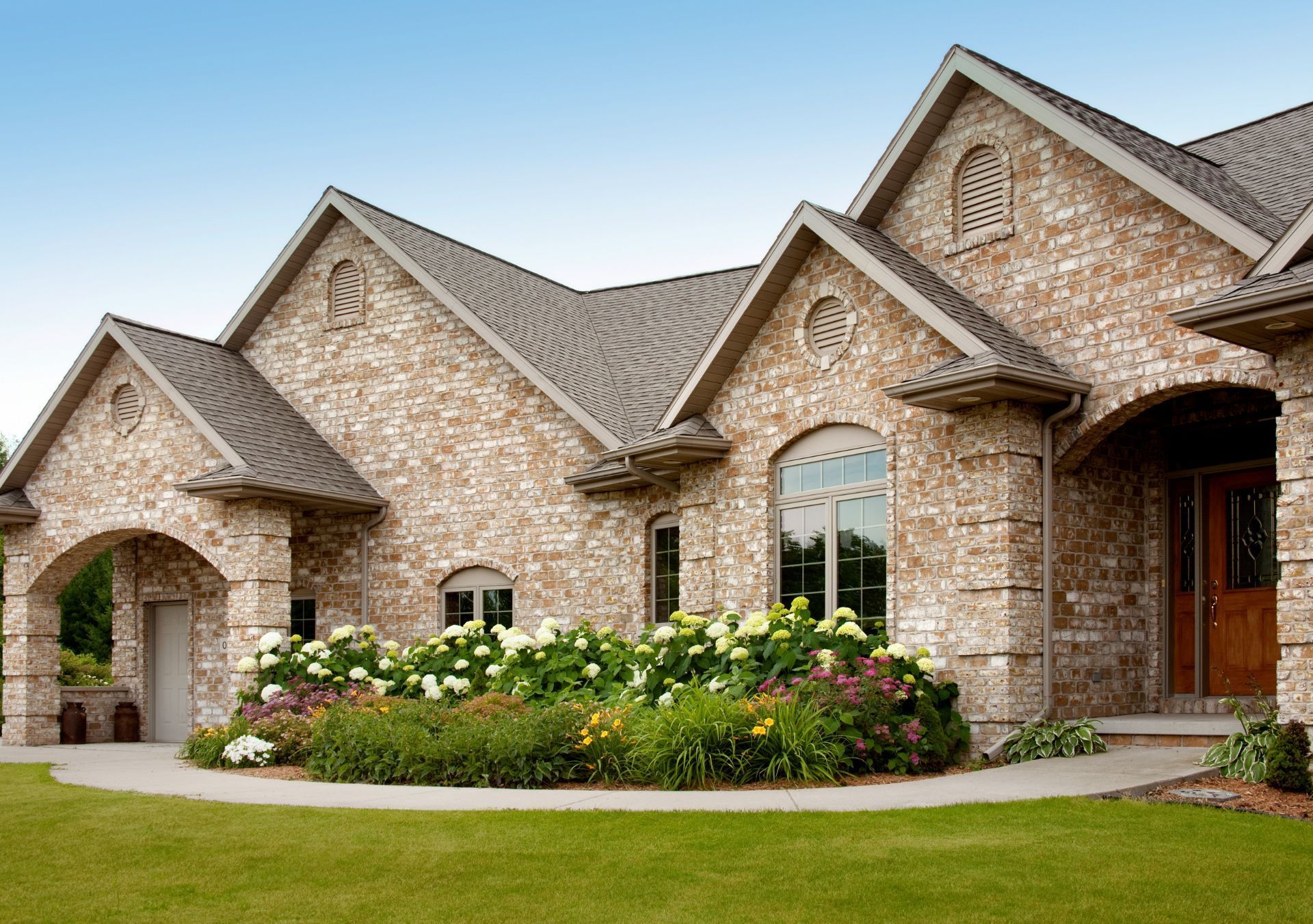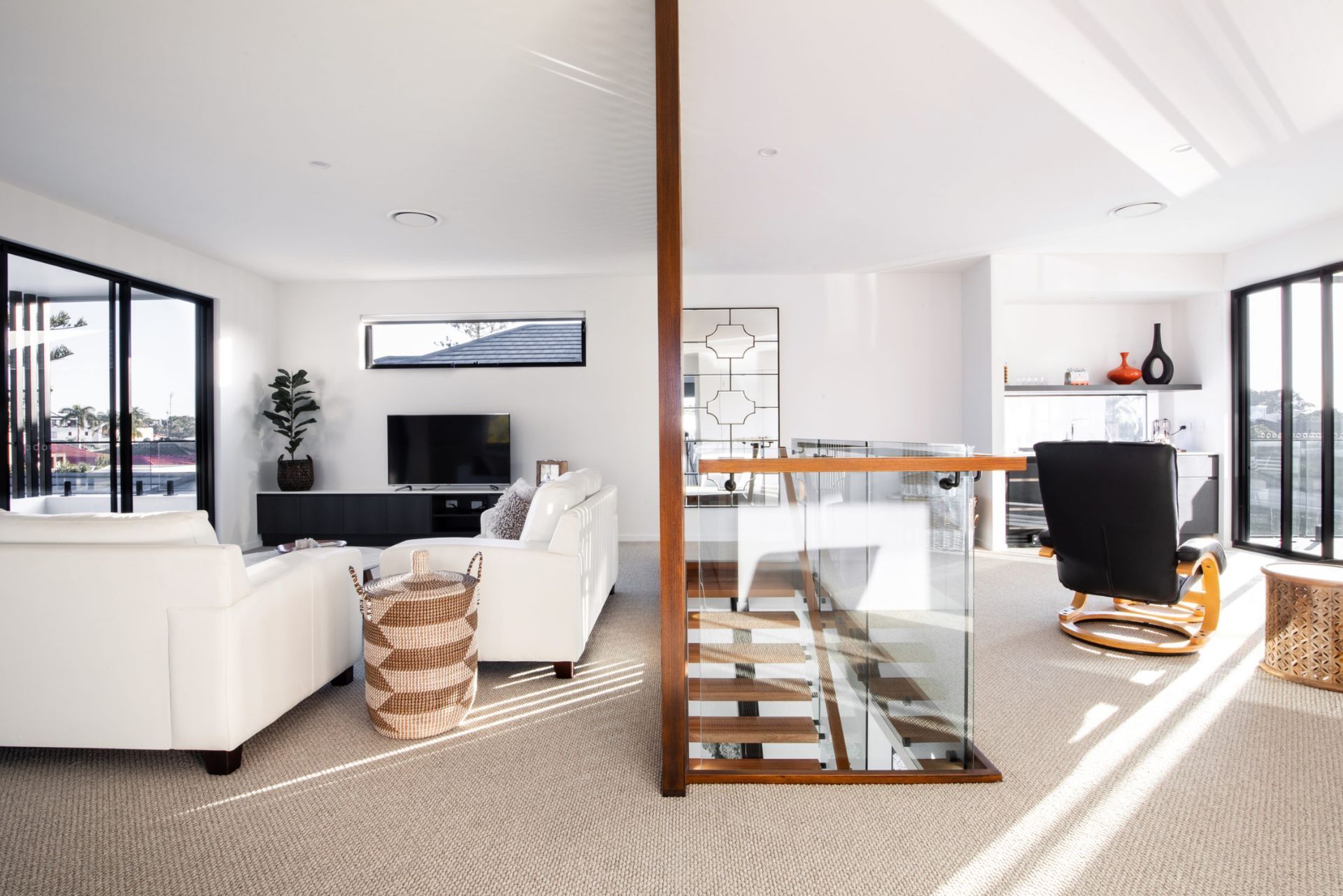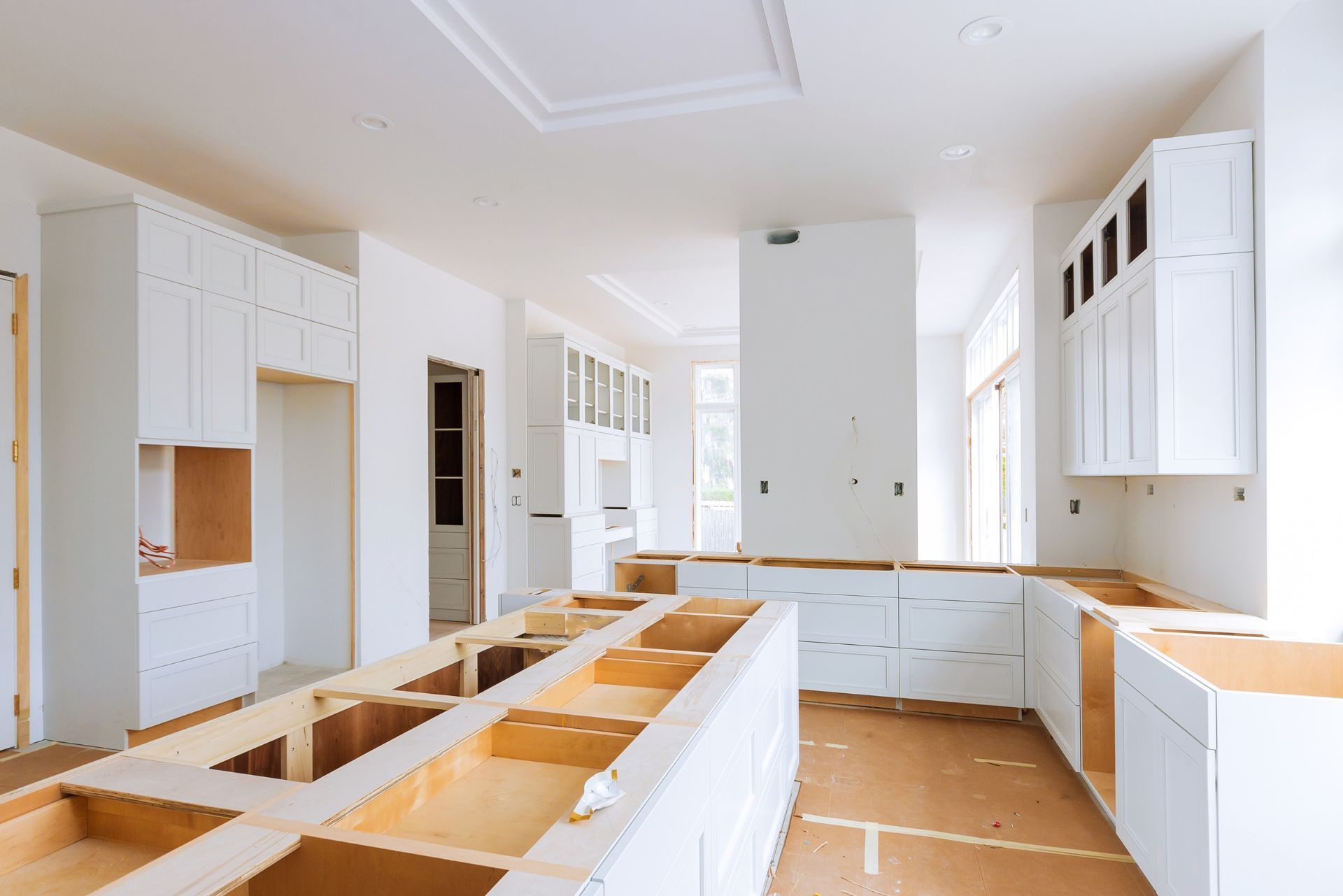
Most Common Personal Policies
Index
Contact Us
When it comes to protecting your investment in a custom home in Arizona, understanding the intricacies of home insurance is crucial. Unlike standard home insurance policies,
custom home insurance caters to the unique features and construction of custom-built homes. This article will delve into everything you need to know about Arizona custom home insurance, from coverage options to factors that influence premiums.
Understanding Custom Home Insurance
Custom home insurance is designed specifically for homes that are tailored to the owner's specifications. These homes often feature unique materials, designs, and amenities that may not be covered under standard home insurance policies. Understanding the differences between custom home insurance and traditional policies is essential for homeowners in Arizona.
What Makes Custom Home Insurance Different?
The primary distinction between custom home insurance and standard home insurance lies in the coverage options. Custom homes often have higher values due to their unique construction and features, meaning that standard policies may not provide adequate coverage. Custom home insurance typically includes provisions for specialized materials, custom fixtures, and unique architectural designs.
Additionally, custom home insurance often provides coverage for additional structures, landscaping, and personal property that may not be included in a standard policy. Homeowners should also consider that custom homes may require specialized endorsements to cover specific risks associated with their unique features. For instance, if a home boasts a custom-built swimming pool or an elaborate outdoor kitchen, these elements may necessitate additional coverage to ensure they are protected against potential damages or liabilities.
Common Coverage Options
When selecting a custom home insurance policy, it’s important to understand the various coverage options available. Most policies will include the following:
- Dwelling Coverage: This covers the structure of the home, including walls, roof, and foundation.
- Personal Property Coverage: This protects personal belongings within the home, such as furniture, electronics, and clothing.
- Liability Coverage: This provides protection against legal claims resulting from injuries or damages that occur on your property.
- Additional Living Expenses: If your home becomes uninhabitable due to a covered event, this coverage helps pay for temporary housing and related expenses.
Moreover, many custom home insurance policies offer optional add-ons that can further enhance protection. For example, some homeowners might consider adding coverage for natural disasters, such as floods or earthquakes, especially if their property is situated in a high-risk area. Other options may include coverage for valuable items like art collections, jewelry, or collectibles, ensuring that these prized possessions are safeguarded against theft or damage. Understanding these additional options can empower homeowners to tailor their policies more closely to their specific needs and lifestyle.
It's also crucial to regularly review and update your custom home insurance policy as your home evolves. Renovations, new constructions, or significant purchases can all impact the value of your property and its contents. By keeping your insurer informed about any changes, you can ensure that your coverage remains adequate and that you are not underinsured in the event of a loss. This proactive approach can provide peace of mind, knowing that your investment is well protected against unforeseen circumstances.

Factors Influencing Custom Home Insurance Premiums
Several factors influence the cost of custom home insurance premiums in Arizona. Understanding these factors can help homeowners make informed decisions when selecting a policy.
Location and Environment
The geographical location of a home plays a significant role in determining insurance premiums. Arizona's diverse climate, from desert areas to mountainous regions, can affect the risk of natural disasters such as wildfires, floods, and storms. Homes located in high-risk areas may face higher premiums due to the increased likelihood of damage. Additionally, proximity to fire departments and emergency services can also influence rates; homes situated near these resources may benefit from lower premiums due to reduced response times in emergencies. Furthermore, local building codes and regulations can impact the cost of insurance, as homes built to higher standards may be less susceptible to damage from environmental factors.
Home Features and Construction Quality
The materials used in constructing a custom home can significantly impact insurance costs. Homes built with high-quality, durable materials may qualify for lower premiums, while those with unique or specialized features may require additional coverage. Insurers will assess the overall quality of construction, including roofing, plumbing, and electrical systems, when determining premiums. Moreover, features such as security systems, fire alarms, and storm-resistant windows can further reduce premiums, as they enhance the safety and security of the home. Homeowners who invest in energy-efficient upgrades may also find that their insurance costs are positively affected, as some insurers offer discounts for homes that utilize sustainable technologies, reflecting a growing trend towards eco-friendly living.
Homeowner Claims History
Insurance companies often review a homeowner's claims history when calculating premiums. A history of frequent claims can lead to higher rates, as insurers may perceive the homeowner as a higher risk. Conversely, homeowners with a clean claims history may benefit from lower premiums and discounts. Additionally, the type of claims filed can also be a determining factor; for instance, claims related to natural disasters may have different implications compared to those for theft or vandalism. Homeowners can take proactive steps to maintain a favorable claims history by implementing regular maintenance and repairs, which can prevent potential issues from escalating into costly claims. Furthermore, many insurers offer loyalty discounts or incentives for long-term policyholders, encouraging homeowners to stay with the same provider and maintain their coverage over time.
Choosing the Right Insurance Provider
Selecting the right insurance provider is a crucial step in securing custom home insurance. Not all insurers offer the same coverage options or customer service, so it’s essential to do thorough research.
Evaluating Insurance Companies
When evaluating potential insurance providers, consider their reputation, financial stability, and customer service ratings. Look for companies with a strong track record in the custom home insurance market. Reading customer reviews and seeking recommendations from friends or family can also provide valuable insights. Additionally, it may be beneficial to check industry ratings from independent agencies such as A.M. Best or J.D. Power, which assess insurers based on their financial strength and customer satisfaction. These ratings can give you a clearer picture of how well a company might handle claims and support its policyholders in times of need.
Comparing Quotes
Obtaining quotes from multiple insurance providers is essential for finding the best coverage at the most competitive price. When comparing quotes, ensure that you are comparing similar coverage levels and deductibles. This will help you make an informed decision based on your specific needs and budget. Moreover, consider the specific endorsements or riders that each policy offers, as these can significantly enhance your coverage. For example, if you live in an area prone to natural disasters, you might want to look for policies that include additional coverage for floods or earthquakes, which are often excluded from standard policies. Taking the time to analyze these details can save you from unexpected out-of-pocket expenses in the future.
In addition to standard coverage options, homeowners may want to consider additional endorsements or riders to enhance their custom home insurance policy. These options can provide extra protection for specific risks associated with custom homes. Custom homes often come with unique features and materials that may not be fully covered under a standard policy, making it crucial for homeowners to tailor their coverage to suit their individual needs.
Flood Insurance
Standard home insurance policies typically do not cover flood damage. For homeowners in flood-prone areas of Arizona, purchasing a separate flood insurance policy is essential. This coverage can help protect against significant financial loss in the event of a flood. It's important to note that flood insurance typically has a 30-day waiting period before it becomes effective, so planning ahead is key. Additionally, homeowners should assess their property’s elevation and proximity to bodies of water, as these factors can influence both the risk of flooding and the cost of premiums.
Earthquake Insurance
Arizona is not typically known for earthquakes, but they can occur. Homeowners may want to consider earthquake insurance as an additional layer of protection. This coverage can help cover the costs of repairs and rebuilding in the event of earthquake damage. While the risk may be lower compared to other states, the potential for seismic activity exists, particularly in northern Arizona. Homeowners should evaluate their property’s location and the structural integrity of their home, as older homes or those built with certain materials may be more vulnerable to earthquake damage. Furthermore, many insurance providers offer discounts for retrofitting homes to make them more earthquake-resistant, which can be a wise investment in both safety and savings.

Understanding Policy Exclusions
Every insurance policy will have exclusions, which are specific situations or types of damage that are not covered. Understanding these exclusions is vital for homeowners to avoid surprises when filing a claim. Being informed about what is and isn’t covered can help homeowners make better decisions regarding their insurance needs and financial planning.
Common Exclusions in Custom Home Insurance
Some common exclusions in custom home insurance policies may include:
- Wear and Tear: Damage resulting from normal wear and tear or lack of maintenance is usually not covered.
- Negligence: If damage occurs due to the homeowner's negligence, the insurer may deny the claim.
- Acts of God: Certain natural disasters, such as earthquakes or floods, may require separate policies for coverage.
In addition to these common exclusions, homeowners should also be aware of limitations regarding specific items within their homes. For instance, high-value items like jewelry, art, or collectibles may have sub-limits, meaning they are only partially covered unless additional riders are purchased. This can lead to significant out-of-pocket expenses if a loss occurs, making it crucial to evaluate personal belongings and consider additional coverage where necessary.
Reviewing Your Policy Regularly
Homeowners should regularly review their insurance policies to ensure they align with their current needs. Changes in the home, such as renovations or additions, may necessitate updates to coverage. Additionally, as property values fluctuate, it’s essential to adjust coverage limits accordingly. Regular reviews can also help homeowners identify any new exclusions that may have been added to their policy, ensuring they remain adequately protected against potential risks.
Furthermore, engaging with an insurance agent during these reviews can provide valuable insights into the evolving insurance landscape. Agents can offer guidance on emerging risks, such as cyber threats or climate-related events, which may not have been significant concerns in the past but are increasingly relevant today. By staying informed and proactive, homeowners can better safeguard their investments and ensure that their insurance policies provide the protection they need.
Filing a Claim: What to Expect
In the unfortunate event of damage or loss, knowing how to file a claim efficiently can make the process smoother. Understanding the steps involved in filing a claim can help homeowners navigate this often stressful experience.
Steps to File a Claim
The following steps outline the process of filing a claim:
- Contact Your Insurer: Notify your insurance company as soon as possible after the incident. Most companies have a dedicated claims department to assist you.
- Document the Damage: Take photos and videos of the damage to provide evidence for your claim. This documentation will be crucial during the claims process.
- Complete the Claims Form: Fill out the necessary claims forms provided by your insurer. Be thorough and accurate to avoid delays.
- Meet with the Adjuster: An insurance adjuster may be assigned to assess the damage. Be prepared to provide any additional information they may need.
Understanding the Claims Process Timeline
The timeline for processing a claim can vary based on the complexity of the situation and the insurer's policies. Generally, claims can take anywhere from a few days to several weeks to process. Homeowners should maintain open communication with their insurer throughout the process to stay informed of any developments.
It’s also important to understand that during this waiting period, you may need to make temporary repairs to prevent further damage. Many insurance policies cover the cost of these emergency repairs, so keep all receipts and document the work done. This proactive approach not only helps to mitigate additional damage but also demonstrates to your insurer that you are taking the situation seriously, which can positively influence the outcome of your claim.
Additionally, familiarize yourself with your policy's coverage limits and exclusions. Knowing what is covered can help set realistic expectations for the claims process. If you encounter any disputes or feel that your claim is being unfairly handled, consider seeking advice from a public adjuster or legal professional who specializes in insurance claims. They can provide valuable insights and may assist in negotiating a fair settlement on your behalf, ensuring that you receive the compensation you deserve.
Tips for Reducing Insurance Premiums
Homeowners looking to save on their custom home insurance premiums have several options to consider. Implementing certain strategies can lead to significant savings without sacrificing coverage.
Bundling Insurance Policies
Many insurance providers offer discounts for bundling multiple policies, such as home and auto insurance. By consolidating policies with one insurer, homeowners can often secure lower rates while simplifying their insurance management.
Increasing Deductibles
Choosing a higher deductible can lead to lower premiums. However, homeowners should ensure that they can comfortably afford the deductible amount in the event of a claim. This strategy can be particularly effective for those who have a solid track record of maintaining their property.
Conclusion
Custom home insurance in Arizona is a vital aspect of protecting your unique investment. By understanding the intricacies of coverage options, factors influencing premiums, and additional coverage possibilities, homeowners can make informed decisions tailored to their specific needs. Regularly reviewing policies and staying proactive in managing risks can further enhance protection and peace of mind.
Whether you are building a new custom home or have an existing property, taking the time to explore your insurance options will ensure that you are adequately covered against unforeseen events. With the right knowledge and preparation, homeowners can safeguard their custom homes and enjoy the beauty and comfort they provide.
